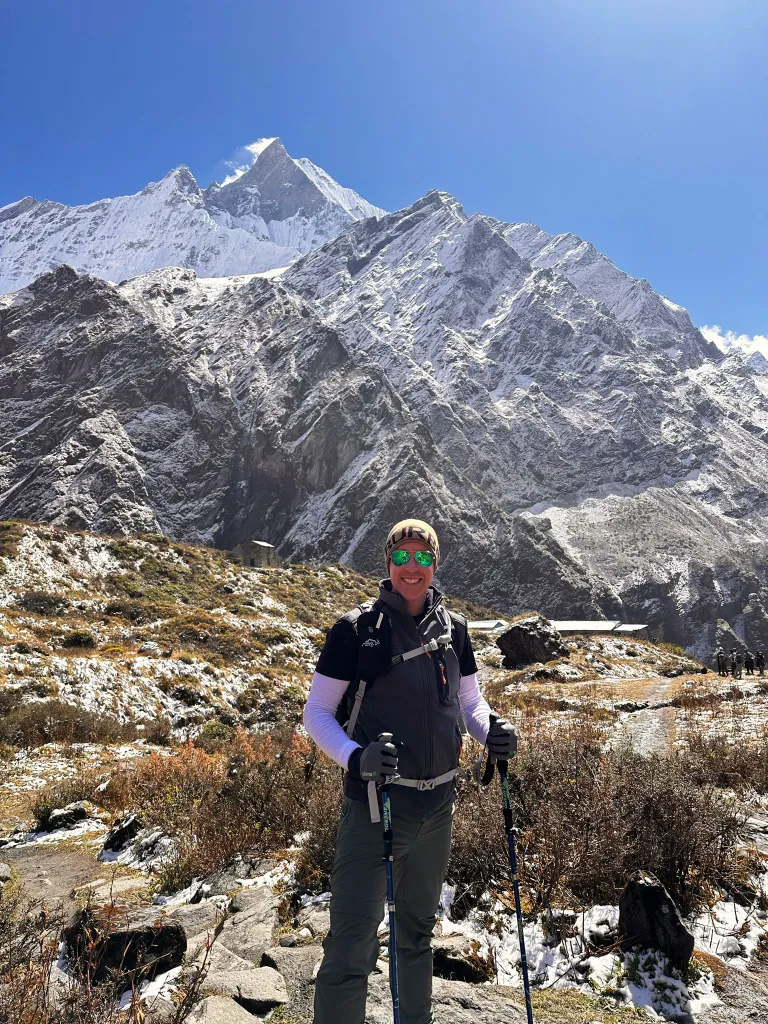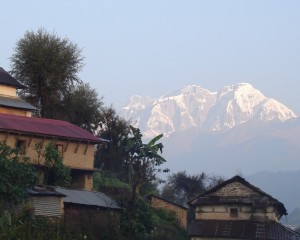5 Epic Mountain Expeditions in Nepal: Climbing the Mountains
Many travelers have Nepal as one of the prime destinations to take in activities to rush their adrenaline and feel the thrill of making the best memories of a lifetime. This is all possible because of the many expedition opportunities you can participate in.
You can explore the alluring wildlife expedition or the diverse cultural expedition of the 123 cultural and ethnic people living happily. The list goes on and on. But if you are looking for an added thrill, then trekking and Mountain Expedition is your ultimate adventure.
Wandering through the rugged terrain, climbing the towering peak, and immersing in the natural heritage's beauty are experiences like no other. That being said, Nepal is home to the tallest peak in the world, a haven for mountaineering enthusiasts. So we are here to help you find the best mountain expedition in Nepal, an unforgettable experience that speaks to your adventurous spirit.
What are the best peak expeditions to undertake in Nepal?
Many people know the name of Nepal thanks to the world's highest peak. Yet adventurers have dreamt of undertaking these peaks. Interestingly, there are best peak expeditions based on the range of skill level and passion.
Mount Everest Expedition
The first in the peak expedition is the majestic Mt Everest expedition, standing at the world's tallest point at 8,848 m. With the push of your endurance and spirit, you are getting the rewards worth every effort. The appealing culture and customs of Sherpa, the charm of the diverse landscape of Everest, the alluring views of Lhotse, Nuptse, Makalu, Cho-Oyu, Pumori, Island, Mera, Changtse, Thamserku, and Ama Dablam as you stand o top of the world with the mix emotions of exhilaration and humility.
You start the journey with the scenic 40 min flight to the gateway of Everest, Lukla, followed by a hike through the hamlet town of Namche and Tengboche, taking you to the Everest Base Camp (5,364 m), where you acclimatize and prepare for the climb.
After reaching the base camp, the route starts with the ascending through several camps, including:
- Camp I (6,065 m): Navigate the Khumbu Icefall with fixed ropes and ladders.
- Camp II (6,400 m): A stable camp for rest and preparation.
- Camp III (7,300 m): Positioned on the Lhotse Face, leading to higher altitudes.
- Camp IV (7,950 m): Located on the South Col, the staging point for the summit push.
Passing through the steep faces, deep crevasses, and iconic Hillary steps, ascending and reaching towards your rewards, breathtaking views that stretch for hundreds of miles, and the unmatched experience of standing on the highest point on Earth.

Makalu Expedition
One of the world's top ten highest peaks, Makalu, with a height of 8,485 m, is yet another charming peak to expedite. Located in the Mahalangur range of the Himalayas, near the border of Nepal and Tibet, Makalu is renowned for its striking pyramid shape and technical climbing challenges. The steep pitches and sharp ridges demand physical challenge. But the rewards of the journey are compelling.
As you embark on your journey with an exciting flight from Kathmandu to Tumlingtar, you will be given a jeep ride to the trailhead. Further, you trek to Base Camp through Shipton’s Trail, crossing scenic spots like Tashi Gaon, Khongma La, and Mumbuk before reaching Base Camp. Now starts the real journey as you pass across the multiple high camps along the route:
- Camp I (6,100 m): Start of the steep ascent.
- Camp II (6,700 m): Positioned near a glacier.
- Camp III (7,400 m): Located on steep ridges and rocky sections.
- Camp IV (7,800 m): Final camp before the summit push.
Now, you climb to the summit and immerse in the views of Mount Everest, Lhotse, Mount Kanchenjunga, Mount Chamlang, Mount Baruntse, Cho Oyu, Gyachung Kang, and Ama Dablam.
Cho Oyu Expedition
Cho Oyu expeditions is the summit of the six highest mountains in the world, smiling at the height of 8,188 m. Like the Makalu, it is also located on the Nepal-Tibet border, about 30 km west of Everest. The name Cho Oyu comes from its local meaning of Goddess of Turquoise due to its stunning turquoise hues.
Besides, the peak is known to be among the more accessible 8,000-meter peaks, ideal for climbers to attempt their first high-altitude ascent. After the manageable challenges and awe-inspiring scenery of Mount Everest, Lhotse, Makalu, Dhaulagiri, Manaslu, Kangchenjunga, Gyachung Kang, and Nuptse
You start your journey by driving to the Rasuwagadi border and flying there. Further, you trek to base camp and start your official expedition.
- Camp I (6,400 m): Trek along a gradual trail, setting up the first higher camp.
- Camp II (7,100 m): Navigate steeper snow slopes to reach the second camp.
- Camp III (7,450 m): Climb to the final camp before the summit push.
Summit Push (8,188 m): Ascend the northwest ridge, cross the "yellow band," and reach the broad summit plateau for stunning views of the Himalayan giants.
Completing the adventure, you safely return to the lower camp, packing all the memories of 35 expedition days.
Api Himal Expedition
Api Himal Expedition is a thrilling adventure to the summit of Api Himal, standing at 7,132 m in the remote Guras Himal region of western Nepal. Among the less explored peaks, it combines appealing scenic views, cultural experiences, and the thrill of challenging climbs.
The remote region highlights the Tibetan culture of the local Sherpa and Lama people, the charming views of Dhaulagiri, Makalu, Lhotse, Cho Oyu, Manaslu, Annapurna II, Gyachung Kang, Nandadevi (7,817 m), Kapchuli (6,850 m), and Rajamba (6,537 m), along with the serene Kali Dhunga Lake.
As you start your trek through the Gokuleshwor and pass through remote villages and diverse landscapes, reach the Base Camp. From base Camp, you start with
- Camp I (~5,200 m): Climb through snow and rocks; rest at the first high camp.
- Camp II (~6,000 m): Tackle steeper terrain with glaciers and crevasses.
- Camp III (~6,600 m): Rest and prepare for the summit push.
- Summit (7,132 m): Climb to the peak for stunning mountain views.
Thus, after immersing in the beauty of the surrounding peaks, you descend through Camp III, Camp II, and Base Camp safely.

Pumori Expedition
Pumori Expedition starts with an incredible adventure to the summit of Mt Everest, cheering at a 7161m peak on the Nepal-Tibet border. Just 8 km west of Everest, Pumori is called "Everest's Daughter" due to its proximity and beauty.
After the strenuous climb, you explore the beauty of Khumbu Valley and the alluring culture of Sherpa and make your way to the Pumori Base Camp (5300 m). Throughout your journey, you will experience the charm of Mount Everest, Lhotse, Nuptse, Cho Oyu, Makalu, and Ama Dablam. Further, you have to establish three higher camps:
- Camp I (5,700 m): A staging point above Base Camp.
- Camp II (6,200 m): A critical stop for acclimatization.
- Camp III (6,480 m): Just below the summit, with steep ice walls.
The final push to the summit of icy the steep terrain, culminating in spectacular views, finally immerses you in a sense of accomplishment.
To wrap up, Nepal stands in the statement that it is a dream destination for adventures with unmatched opportunities for exploration and excitement. With the towering peaks and lively culture, there is something for everyone. If you want to get the life-changing experience of a peak expedition, feel free to contact the experts for the Nepal Vision Trek for your next great adventure.
FAQS






